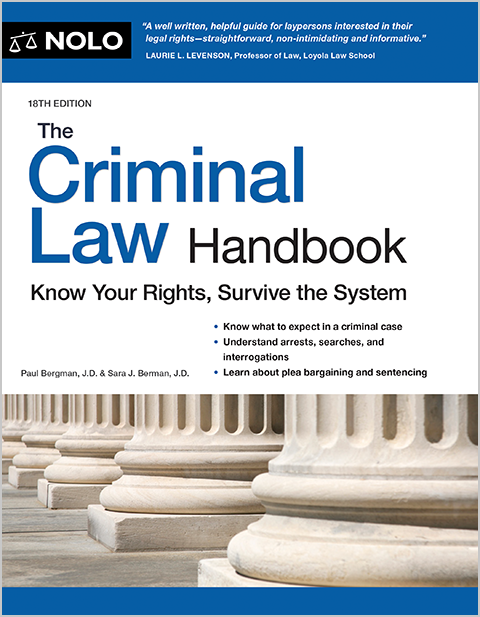If your Social Security disability application is denied, here's how you can file a disability appeal.
Applying for Social Security disability insurance (SSDI) or Supplemental Security Income (SSI) disability benefits can be a slow, frustrating process. Once you've done all the paperwork and waited months for a decision, having your disability claim denied can be discouraging. But you should know that Social Security initially denies most disability claims. Many claims are eventually won on appeal.
The Social Security Administration (SSA) has a progressive appeals system, meaning you can keep appealing to a higher authority if you get denied. This article will give you an overview of how the SSDI and SSI appeals process works so you can decide when you might be able to file an appeal for Social Security disability benefits yourself and when you might need help with your appeal. And note that the appeals process is mostly the same for Social Security claims not involving disability.
- What Should You Do If Your Social Security Claim Is Denied?
- How Many Times Can You Appeal a Disability Claim?
- What to Include in Your Social Security Appeal
- How Long Do Social Security Appeal Decisions Take?
- Getting Help With Your Social Security Disability Appeal
- Alternatives to Appealing an SSDI or SSI Denial
- Starting a Social Security Disability Appeal
- Appealing a Termination of Benefits
- What Are Your Chances of Winning a Social Security Appeal?
What Should You Do If Your Social Security Claim Is Denied?
Social Security denies disability applications for a variety of reasons. Some denials are technical—usually meaning:
- you haven't worked long enough to be eligible for SSDI
- you're currently earning too much income from work to get disability, or
- you don't meet the income and asset limits for SSI disability benefits.
Social Security also denies disability claims because they don't meet the agency's medical requirements for disability or because the claims examiner believes that you can still work in some kind of job (even if you can't do your past job).
If your application for SSDI or SSI benefits has been denied, you can and should file a disability appeal. The notice you received from Social Security denying or terminating your benefits will include information on how to appeal the decision.
You must appeal in writing within 60 days of the date that you receive the notice. And you'll need to follow the instructions included in the denial letter.
How Many Times Can You Appeal a Disability Claim?
There are four possible levels of appeal following any Social Security disability denial. You have to advance through each appeal level in the following order:
- Reconsideration. An informal review of your application by another claims examiner at your local Social Security office—not the examiner who made the initial denial.
- Disability Appeal Hearing. An administrative law judge (ALJ) reviews the initial disability denial (or termination of benefits after a continuing disability review). It's at this level that you get the opportunity to speak with the judge and explain why your disability application should be approved. (Most successful disability claims are won at this level.)
- Appeals Council Review. The Social Security National Appeals Council in Washington, D.C. can grant, deny, or dismiss your request for review. If your request is granted, the appeals council will look at the ALJ's ruling in your case.
- Federal District Court. If none of your Social Security appeals are successful, but you believe there was a serious procedural error or the laws were misapplied in your case, you can sue the SSA in federal court—an often lengthy and expensive process.
Learn more about what happens at each of the four disability appeal levels.
What to Include in Your Social Security Appeal
Think strategically about the additional information you need to include in your appeal. Put yourself into the shoes of whoever denied your claim, and try to figure out why they got it wrong. What new evidence might back up your version of things?
Psychologically, having new evidence to look at seems to help government workers change their minds. So, the most convincing evidence usually comes from an outside authority—for example:
- an employer who writes a letter confirming the months that you worked and perhaps, the difficulty you had on the job, or
- a specialist explaining your physical limitations and why they keep you from working.
How Long Do Social Security Appeal Decisions Take?
The first level of appeal, reconsideration of a denial by Disability Determination Services (DDS), is the quickest because your case will simply be reviewed by a different medical consultant and examiner—not the same ones who made the original decision. You could get a decision in a few weeks, or you might have to wait a few months, depending on the agency's caseload.
Once you get to the next level of appeal, a hearing before an administrative law judge (ALJ), the decision-making process can really slow down—meaning you could easily wait a year or longer for a hearing. And on further appeal to the Appeals Council, you'd probably be lucky to get any kind of answer within a year.
Appealing your case to federal court typically takes about a year for a decision. But several years isn't out of the question. Federal court judges have many kinds of cases on their schedules that have nothing to do with Social Security disability, so your claim has to wait its turn.
Getting Help With Your Social Security Disability Appeal
Some people handle their own Social Security appeal. But you don't have to go it alone. You can appoint a lawyer, a friend, or someone else (called your "authorized representative") to help you. Social Security will work with your representative just as it would work with you.
At the first level of appeal, reconsideration by the DDS, many people don't have representation. But this changes as the appeals move further along—80% use a legal representative when they appeal to an administrative law judge.
If you'd like an attorney to represent you during the appeal process, you may be able to find a disability attorney to give you a free consultation.
Alternatives to Appealing an SSDI or SSI Denial
If Social Security has denied or terminated your benefits, there are steps you can take outside of the appeal process. Here's a look at some other options.
- Reopening your claim. An alternative to appealing your case is to request a reopening of your claim. But if too much time has passed—more than a year—reopening a claim is only allowed in certain situations.
- Filing a new claim. If you lose your appeal (no matter at what level), you have the option to file another initial claim. You'd just go to your local Social Security field office or to the online application and start the process over again. Your chances of winning benefits will improve if your impairment has worsened or you've developed additional impairments.
Generally, it's a better idea to appeal the decision in your current claim rather than filing a new claim, because you have a better chance of getting approved for benefits after having a hearing. But occasionally filing a new claim is the right call. For more information, see Nolo's article on deciding whether to appeal a disability denial.
Starting a Social Security Disability Appeal
To begin your appeal, you can call your local Social Security field office and tell them that you want to appeal a decision that denied or terminated your benefits. Your local Social Security representatives will tell you about the proper forms and where to mail the paperwork once you've filled it out.
The form you need to fill out to get a reconsideration is called the Request for Reconsideration, Form SSA-561. To request an appeal hearing, you'll use Form HA-501, Request for Hearing by Administrative Law Judge. You can also start your appeal online.
Appealing a Termination of Benefits
If you're receiving disability benefits and Social Security decides to terminate them, it's possible for you to continue getting those benefits while you appeal (up through the ALJ's decision after a hearing)—if Social Security has decided:
- you‘re no longer eligible for SSDI because your condition has improved, or
- you're no longer eligible for SSI (or your SSI will be reduced).
To continue getting your benefits in this situation, you must sign and return Form SSA-795 (Statement of Claimant or Other Persons) within ten days of receiving the denial of benefits notice. Social Security should send the form to you with the termination notice, but it can also be downloaded here.
What Are Your Chances of Winning a Social Security Appeal?
Social Security approves fewer than 35% of the initial disability applications the agency receives. But your odds of winning your disability claim improve as you work your way through the SSI or SSDI appeal process. Although only a few claims are approved after reconsideration (around 15%), the number of approvals jumps to nearly half (45%) after an ALJ hearing—and those who hire attorneys before their hearings have more success than those who don't.
For more information about Social Security disability, including tips on applying for benefits, appealing a denial of benefits, and understanding detailed medical listings, see Nolo's Guide to Social Security Disability: Getting & Keeping Your Benefits, by David A. Morton III, M.D. (Nolo).
To learn more about appealing a denial of retirement benefits, see Social Security, Medicare & Government Pensions, by Joseph Matthews and Dorothy Matthews Berman (Nolo).
- What Should You Do If Your Social Security Claim Is Denied?
- How Many Times Can You Appeal a Disability Claim?
- What to Include in Your Social Security Appeal
- How Long Do Social Security Appeal Decisions Take?
- Getting Help With Your Social Security Disability Appeal
- Alternatives to Appealing an SSDI or SSI Denial
- Starting a Social Security Disability Appeal
- Appealing a Termination of Benefits
- What Are Your Chances of Winning a Social Security Appeal?

